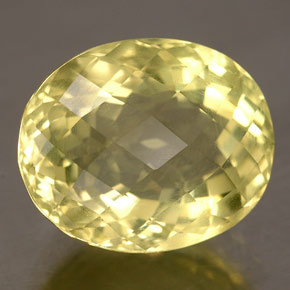The Gemstone Orthoclase

Orthoclase as a mineral is a common feldspar, but when described as a gemstone it refers to a rare transparent yellowish form of the mineral Sanidine that is found in Madagascar. Until recently, this gemstone was though to be Orthoclase, and only recently have analyses determined it as being Sanidine. Despite this, it is still called Orthoclase on the gemstone market since the name has already been established. This gemstone can have a very pleasant yellow color, sometimes with some hints of brown in it. A purer yellow color is more desirable, although champagne colored stones are also popular. A new, apple-green type has recently been discovered, though its production is very limited.
Chemical Formula
?
KAlSi
3O
8
Additional Properties
|
Refractive Index
?
1.52 - 1.53 |
Double Refraction
?
-.008 |
Transparency
?
Transparent |
SG
?
2.56 - 2.59 |
Luster
?
Vitreous |
| Cleavage ?
2,1 - basal ; 2,1 - prismatic ; 3,1 - pinacoidal |
All About
The color of Orthoclase gemstones is natural and is not enhanced by
heat treatment. Occasionally the colorless, transparent forms from Switzerland are also cut as gemstones, but in general Orthoclase gemstones are yellow. Some Orthoclase gems display a
cat's eye effect when cut into
cabochon. Orthoclase may be
fluorescent with a weak orange
or bluish color.
Uses
?
Orthoclase is a rare gemstone and is faceted into gemstone cuts for jewelry such as pendants, earrings, and pins.
Treatments & Enhancements
?
Orthoclase gemstones are not treated or enhanced.
Orthoclase Sources
?
Mostly from Madagascar, but also from Myanmar (Burma), Tanzania, and Brazil. The Madagascar locality provides the stones of the deepest color.
Similar Gemstones
?
Citrine, Heliodor, and
Topaz are all softer.
Orthoclase in the Rough Photos
?